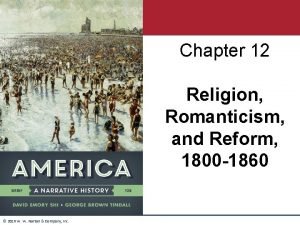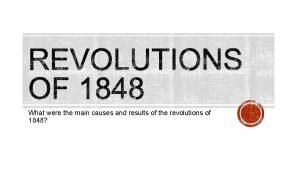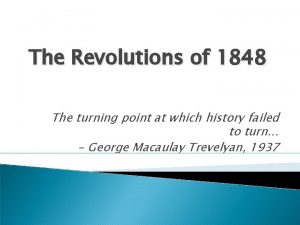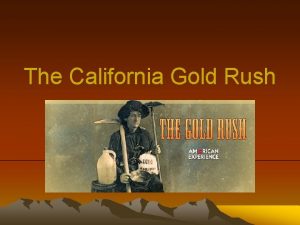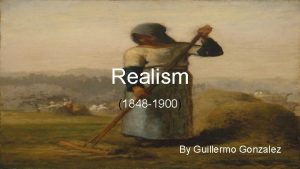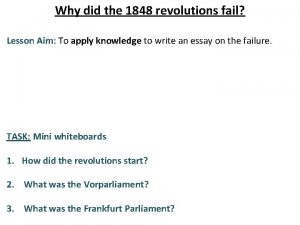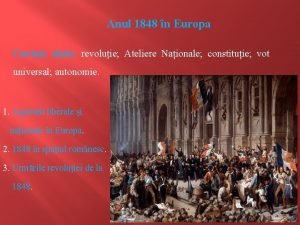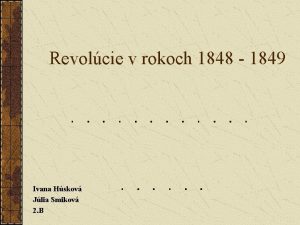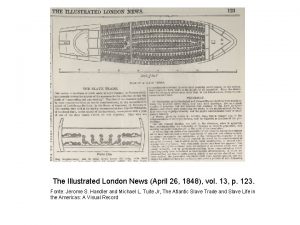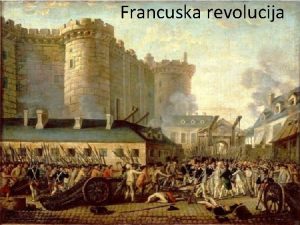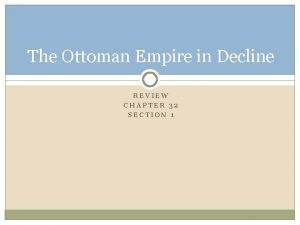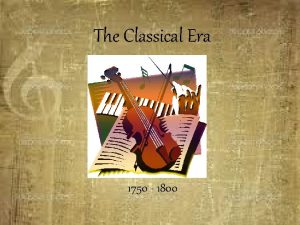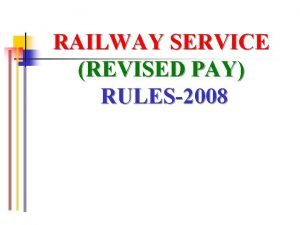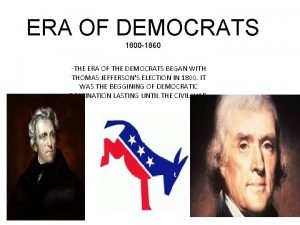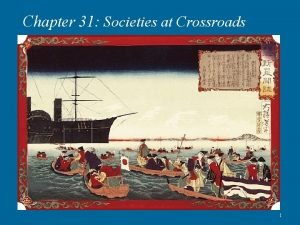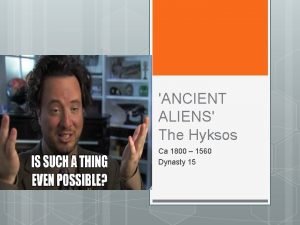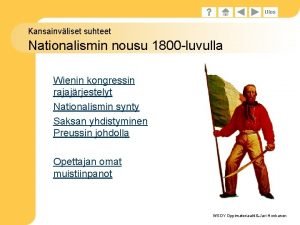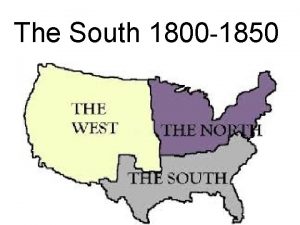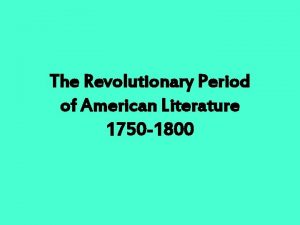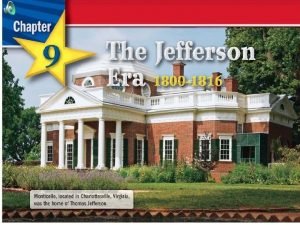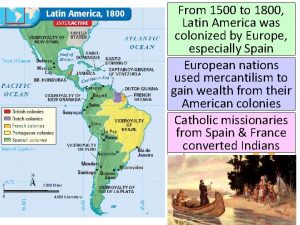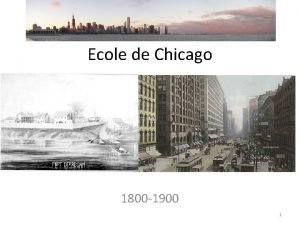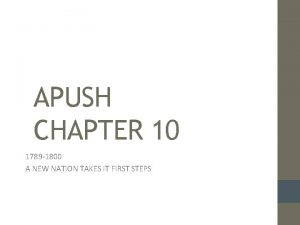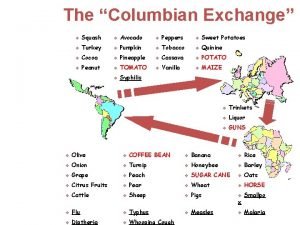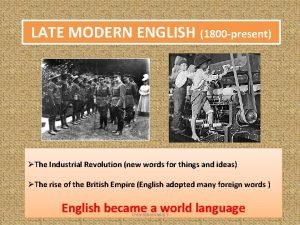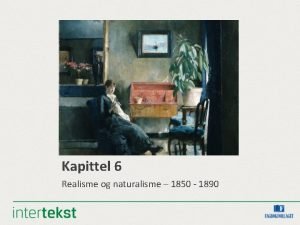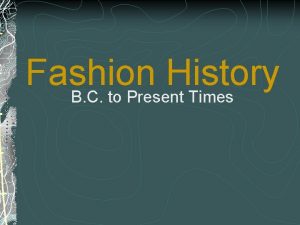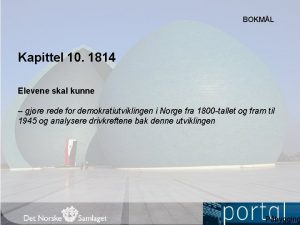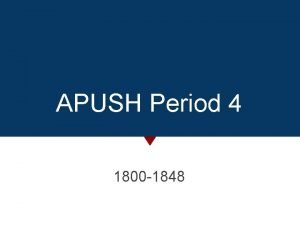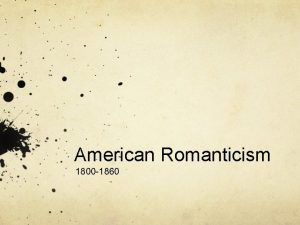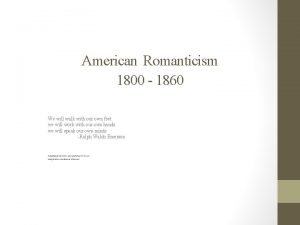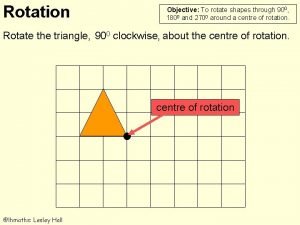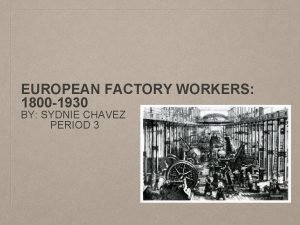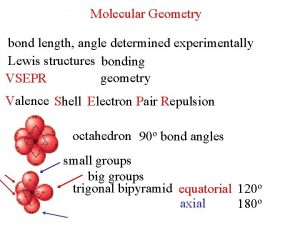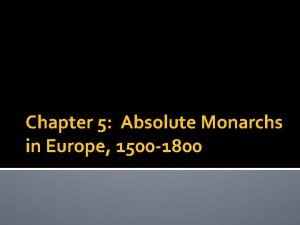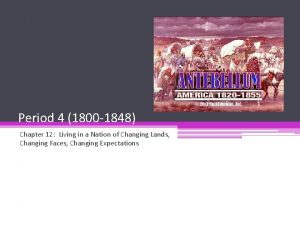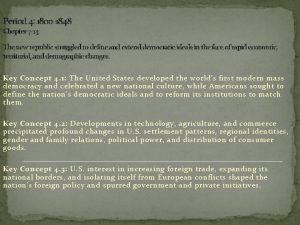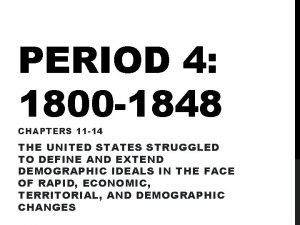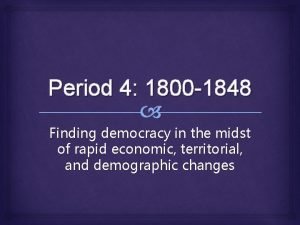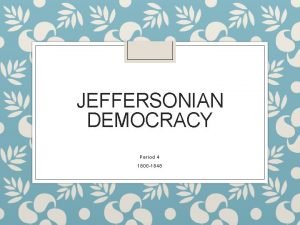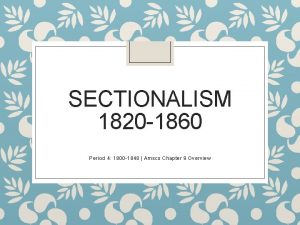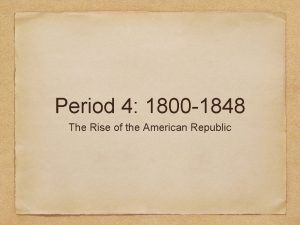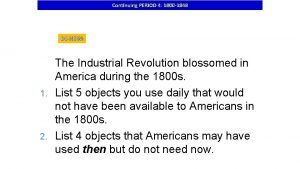Period 4 1800 1848 Chapter 7 13 The












































































































































- Slides: 140

Period 4: 1800 -1848 Chapter 7 -13 The new republic struggled to define and extend democratic ideals in the face of rapid economic, territorial, and demographic changes. Key Concept 4. 1: The United States developed the world’s first modern mass democracy and celebrated a new national culture, while Americans sought to define the nation’s democratic ideals and to reform its institutions to match them. Key Concept 4. 2: Developments in technology, agriculture, and commerce precipitated profound changes in U. S. settlement patterns, regional identities, gender and family relations, political power, and distribution of consumer goods. Key Concept 4. 3: U. S. interest in increasing foreign trade, expanding its national borders, and isolating itself from European conflicts shaped the nation’s foreign policy and spurred government and private initiatives.

Chapter 7 The Jeffersonian Era The period covered in this chapter was marked by definition and expansion. Having achieved political independence, Americans struggled to achieve cultural independence as well, and this search for self-identity touched almost every phase of the nation's life. "American" tastes in music, literature, and art developed. Religious bodies with ties to colonial ways declined as the Second Great Awakening swept America. The global process of industrialization began to have an impact in the United States while technology, unrestrained by mercantile regulations, expanded to solve problems that were particularly American. Meanwhile American politics began to take on characteristics and respond to needs with little precedent in European systems. At the center of this activity, at times leading it and at times being led, was Thomas Jefferson, a president whose versatility seemed to mirror the diversity of the nation. A pragmatic politician, Jefferson was also a committed idealist, one who deserves to be the symbol of the age that bears his name. The War of 1812 did more than test the army and navy of the United States, it tested the nation's ability to survive deep internal divisions that threatened America's independence as surely as did the forces of Great Britain. Hoping to keep his nation out of war, Jefferson followed a policy that kept the peace but raised fears among his political enemies. The rest of the nation, feeling that Britain was insulting its sovereignty, rallied to the president. In the end, these divisions, although they hampered the war effort, did not survive the conflict, and the United States entered the postwar period with a new sense of nationalism.

Chapter Seven Main Themes üHow Americans expressed their burgeoning cultural independence through republican education, literature and religious revivalism. üThe impact of industrialism on the United States and its people, particularly with regard to agricultural technology and transportation. üThe domestic questions and foreign entanglements of Thomas Jefferson's presidency, including Marbury v. Madison, the Louisiana Purchase, the settling of the west, and the impressment and embargo controversies üThe growing conflict between British naval policies and American self-identity that led to the War of 1812, and its ultimate consequences for the young American nation.

American History: Chapter 7 The Jeffersonian Era

The Rise of Cultural Nationalism � Republicans favored education � Educate future voters (electorate) � Not all states had public education -> private institutions � Women and education: � ***Republican Motherhood***: � Women should raise children to be good citizens � Slave owners did not want slaves to be educated � Fear that knowledge could encourage rebellion

The Rise of Cultural Nationalism � University of Pennsylvania: � 1 st medical school � Medical treatment was very primitive � “Bleeding” � Midwives: � Common occupation for women � Decreased due to physicians performing deliveries � Noah Webster: � American Spelling Book (1783) � Helped standardize English language

The Rise of Cultural Nationalism � Key Religious Beliefs: � Deism: � God existed, but created universe and stepped back � Unitarianism: � Did not believe in pre-destination � Anyone could attain salvation � Rejected the idea of the Trinity � Jesus was a person, not the son of God

The Rise of Cultural Nationalism � Religion in the late 18 th century: � 10% of white Americans were member of a formal church � Another attempt to bring them back? � YES! � 2 nd Great Awakening � Cane Ridge, KY (1801): � 1 st Camp Meeting – 25, 000 people � “Burned Over District” � Western NY � Message of 2 nd Great Awakening: � Individuals must reconnect with God � Effects of 2 nd Great Awakening: � Like the 1 st, increase of different sects and denominations � Increase involvement of women � ***Helps inspire reform movements of the 1830 s and 1840 s***

Stirrings of Industrialism � Samuel Slater: � “Father of the factory system” � Eli Whitney: � Cotton Gin: � Drastically reduced time needed to separate cotton from seeds � Led to a huge explosion of slavery � Helped connect the agricultural South with textile north � Interchangeable Parts: � Produced identical parts for weapons � Applied to other industries � “Cookie Cutter” � Robert Fulton: � Clermont – sailed UP the Hudson River, helped promote steamboat transportation

Stirrings of Industrialism � Turnpikes: � Lancaster Turnpike: � 60 miles from Philadelphia to Lancaster � Toll road – made $ for corporations � Spurred the growth of other turnpikes � State governments financed turnpikes into less populated areas

Jefferson The President � “We are all republicans, we are all federalists” � “Revolution of 1800? ” � Not really, many Federalists policies remained intact – not the excise tax � Patronage: � Providing government jobs to party members and supporters � Jefferson widely used patronage in his second term � Reducing the Federal Government: � Cut back on the military – fear of large standing armies � Problems with the Barbary States

Jefferson The President � Marbury v. Madison � Jefferson refused to allow Marbury (Midnight judge appointed by Adams) to serve � Supreme Court stated Marbury was entitled to be judge, but they could NOT enforce it � Supreme Court deemed part of the Judicial Act of 1789 unconstitutional � Significance of Marbury? � Established JUDICIAL REVIEW � Supreme Court can declare federal laws unconstitutional � Judicial branch gains power

Jefferson The President � Two Key Judges: � John Marshall: � Chief Justice of Supreme Court – increased power of the federal government � Samuel Chase: � Justice on the Supreme Court � Impeached (to bring charges against) because he was a Federalist � NOT removed from office � Lesson of impeachment of Chase? � Impeachment would not be used regularly

Doubling the National Domain � Treaty of San Ildefonso (1800): � France regained Louisiana Territory � US wanted New Orleans: � Right of Deposit � Livingston and Monroe buy LA Purchase for $15 million � Was the purchase constitutional? � Under Jefferson’s strict interpretation, no � Jefferson argued his treaty-making power allowed him to � The LA Purchase caused Jefferson to switch from a strict interpretation to a loose interpretation � Ironically, the Federalists were against loose interpretation � Feared the new land would be made up of Jeffersonian farmers, which would limit Federalist powers

Doubling the National Domain � Essex Junto: � Some New England Federalists wanted to secede � Attempted to lure Aaron Burr � Killed Hamilton in a duel – Hamilton helped keep Burr from becoming Governor of NY � Traveled to SW US, wanted to take over land from the Spanish

Expansion and War � Berlin Decree: � France forbade European trade with GB; would capture US ships that traded � Orders in Council: � All goods being traded with Europe must stop at Great Britain first � Both violated the US’ rights and neutrality � **Impressment** � British policy of searching US ships for deserters and forcing men into the navy � Chesapeake-Leopard Affair: � Dealt with Impressment � British ship attacked a US ship, killing 3 and wounding 18 � Helps lead to the……

Expansion and War � Embargo Act of 1807: � Forbade trade to ALL foreign countries � Huge disaster � Non-Intercourse Act (1809): � Re-opened trade EXCEPT to France and England � Still a disaster � Macon’s Bill #2: � Promised to end embargo against the country that would respect America’s rights � France agrees; embargo remains against Britain….

Expansion and War � General William Henry Harrison: � Governor of Indiana Territory � Tecumseh: � Native American leader � Sought to unite all Native Americans � Battle of Tippecanoe: � Harrison defeats Native Americans � Britain aided and encouraged the uprising � Resulted in increased American expansion

The War of 1812 � War Hawks: � Young Congressmen (mostly from South and West) that favored war with Great Britain � Henry clay! � John C. Calhoun � Must-know battle: � New Orleans – Jackson becomes a hero � Occurs after the war ends � Treaty of Ghent: � Ends the War of 1812, neither side gained or lost anything

The War of 1812 � Hartford Convention: � NE Federalists had many grievances � Wanted to add an amendment, increase requirement to declare war � Some urged secession � This drastically hurt the Federalists since the country was experiencing a sense of NATIONALISM!!!!

Chapter 7 The Jeffersonian Era 1800 -1816 Jeffersonian Republicanism Louisiana Purchase 1803 Lewis and Clark Expedition Warhawks War of 1812 Impressment Chesapeake- Leopard Affair Embargo 1808 Hartford Convention 1814 Treaty of Ghent 1814 Battle of New Orleans 1815 John Quincy Adams Rush-Bagot Treaty 1817 Marbury v. Madison John Marshall Anglo-American Treaty 1818 Adams-Onis Treaty 1819 Cotton Gin Robert Fulton Western Confederacy Tecumseh and the Prophet William Henry Harrison Battle of Tippicanoe Essex Junto Burr Conspiracy

Chapter 7 Growth of the United States 1783 -1853

Chapter 7 Early 19 th Century Transportation Revolution

Chapter 7 The Jeffersonian Era 1800 -1824 Discussion notes

Chapter 7 The Jeffersonian Era 1800 -1824 Discussion notes

Chapter 7 Early 19 th Century Transportation Revolution

Chapter 8 Varieties of American Nationalism 1812 -1848 After the War of 1812 a new spirit of nationalism and expansion swept the nation. Party and sectional divisions fell by the wayside during the “era of good feelings” with a president who was determined to heal old wounds, but this spirit of unity did not last. Sectional tensions reappeared during the Missouri debates, which brought the issue of slavery and its expansion to the forefront. The immediate question, which section would control the Senate, found resolution through the Missouri Compromise, but the underlying problem proved more difficult to settle. The Missouri debates revealed that some of the nation saw the addition of slave states as a threat to the Union as southern politicians (and many of their northern counterparts) had come to equate the expansion of slavery with the expansion of southern political power. Divisions within the Republican Party led to the appearance of a new two-party system, which temporarily seemed to overshadow sectional concerns. With the election of Andrew Jackson to the presidency in 1828, the nation again seemed concerned more with unity than division. How long this would last was another question.

Chapter 8 Varieties of American Nationalism Main Themes üThe effects of postwar expansion and continued economic growth in shaping the nation during the "era of good feelings. ” üThe rise of sectional controversy arising from slavery, and the early attempts by Henry Clay and others to prevent strife through the Missouri Compromise. üThe many prominent decisions of the Marshall Court during the Era of Good Feelings, and their role in promoting American nationalism, federal supremacy and Native American tribal sovereignty. üThe development of the "Monroe Doctrine" and its application in further fostering American nationalism.

American History: Chapter 8 Varieties of American Nationalism

Building a National Market � 1 st Bank of US (BUS) expired in 1811 � State banks issued notes � 2 nd BUS: � Charter for 20 years in 1816 � Francis Cabot Lowell: � 1 st mill for spinning and weaving � Post War of 1812 Economic Problems: � Britain flooded the US market with goods � Hurt US economy � Need for tariff(s) � Tariff of 1816: � Designed to protect American industries � Protective tariff, not just a revenue tariff

Building a National Market Cont. � Transportation improvements � Building of roads, canals, turnpikes, etc. � Question: who should fund, federal, or state government? � National Road: � Cumberland, Maryland to Wheeling, Virginia � Funded by federal government � Calhoun’s internal improvements bill: � Proposed for federal government to finance internal improvements � “Let us, then, bind republic together with a perfect system of roads and canals. ” � Vetoed by Madison – believed Congress did not have authority to fund the project

Expanding Westward � After War of 1812, many Americans moved westward � Fewer Native Americans, less threats � Huge increase in population � Need for more farmland out west � Cotton, like tobacco, exhausted land, was a large cash crop � Building of forts on the Mississippi River and Great Lakes � Erie Canal - 1825 � 1821, Mexico gains independence � US increases trade

The “Era of Good Feelings” � What is it? � Huge increase in nationalism (Post-War of 1812) � 1 political party rule (Democratic-Republicans) � Attributed to Monroe’s Presidency, 1817 - 1825 � Election of 1816: � Continuing of the Virginia Dynasty � Rufus King (Federalist) received 34 electoral votes � Monroe chose JQA as his Secretary of State � Goodwill tour through the US � Florida: � Seminole War: � Invasion of Florida by Andrew Jackson � Adams-Onis Treaty of 1819: � US gained all of Florida in exchange for: US gave up its claim to Texas Spain gave up its claim to the Pacific NW

The “Era of Good Feelings” � Financial Panic: � When in doubt, panics are caused by speculation (buying of a good in hopes of selling it at a higher price in the future) � Panic of 1819: � Overspeculation on land � The BUS began tightening its credit and calling in loans � Many state banks began to fail � As a result of this depression, many Americans blamed the BUS

Sectionalism and Nationalism � MO Compromise: � MO (part of LA Purchase) applies for statehood as a slave state � This would make 12 slave states and 11 free � Tallmadge Amendment: � Proposed for gradual emancipation of slaves in MO � South hated it, seen as a step towards ending ALL slavery � The Solution? � MO added as a slave state � ME (from Massachusetts) added as a free state � Balance stays equal at 12 states free, 12 slave � Slavery prohibited above 36° 30’ line in the future � Impact of MO Compromise? � Slavery would be the NUMBER 1 issue in national politics until the Civil War � Helped lead to an increase in sectionalism

Sectionalism and Nationalism � John Marshall: � 4 th Chief Justice � During his reign, the national government became more powerful, at the expense of states � Also, he helped improve the economy � Dartmouth College v. Woodward: � NH government tried to change the charter � Daniel Webster (great orator, future senator) argued the case � Marshall said a charter is a contract that could not be changed � Cohens v. Virginia: � Supreme Court can review state court decisions � Again, federal government gains more power at states expense

Sectionalism and Nationalism � ***Mc. Culloch v. Maryland*** (1819) � Background: Maryland hated the BUS, tried to tax it � Marshall and the court said the states could NOT tax a federal agency � “the power to tax is the power to destroy” � Essentially, the Supreme Court states the BUS is constitutional � ***Gibbons v. Ogden*** (1824) � Issue was with interstate trade (involving more than one state) � Stated that only Congress could regulate interstate trade � More power to federal government � Worcester v. Georgia (1832) � Stated Georgia could not interfere with Native land � Decision was not enforced, Natives were forced to leave

Sectionalism and Nationalism The Monroe Doctrine � Written primarily by Secretary of State JQA � Essentially warned Europe to stay out of Latin America � US would consider any challenge as unfriendly � In return, the US would stay out of European affairs � Impacts: � Short-term? � Little to none � Long-term? � US would be the dominant power in the Western Hemisphere

The Revival Opposition � The “Corrupt Bargain”: � 4 candidates for the election of 1824 � None win an electoral majority, although Andrew Jackson has most electoral and popular votes � According to the 12 th Amendment, the House would then decide on the top 3 candidates � Henry Clay (Speaker of the House), finished 4 th and was out of the running � He threw his support behind JQA � Adams becomes president, Henry Clay becomes his Secretary of State � Clay’s American System: � Protective Tariffs, Internal Improvements, Bank of the US � Jackson and his supporters were outraged

The Revival Opposition � Tariff of Abominations (1828): � Raised tariff rates drastically � Hated by South and West � Favored by manufacturers in NE � Election of 1828: � JQA v. Jackson round 2 � Jackson destroys Adams, 178 – 83 � Problems await Jackson…….

Chapter 8 Varieties of American Nationalism 1800 -1845 2 nd BUS John Marshal Protective Tariffs Worcester v. Georgia National Road Dartmouth v. Woodward Panic 1819 Mc. Cullouch v. Maryland Robert Fulton Gibons v. Ogden Steamboats Fletcher v. Peck James Monroe Era of Good Feelings National Republicans John C. Calhoun “Corrupt Bargain” Henry Clay The American System Missouri Compromise 1819 JQ Adams Anglo-American Treaty 1818 Adams- Onis 1819 Monroe Doctrine 1823

Chapter 8 Discussion Analytical Journal 1. What were effects of the War of 1812 on banking, shipping, farming, industry, and transportation? 2. Discuss "era of good feelings" as a transitional period. 3. What caused of the Panic of 1819, and what were the effects of the subsequent depression on politics and the economy? 4. Outline the northern and southern arguments during the debates over the admission of Missouri and how they influenced sectional attitudes. 5. Assess the ways in which the Marshall Court changed the status of the federal judiciary and how the Court's decisions altered the relationships between the federal government and the states and the federal government and business. 6. Explain reasons why President James Monroe announced his "doctrine" in 1823 and its impact on international relations at the time. 7. Discuss the Presidential politics in the "era of good feelings" and how they altered the political system. 8. Explain the reasons why Andrew Jackson was elected in 1828 and the significance of his victory. Each of the terms below contributes to a comprehensive understanding of the different forms nationalism took in the early 19 t h century. As you define these terms, demonstrate why each person, event, concept, or issue is important to a thorough understanding of this chapter.

Missouri Compromise 1820

Chapter 8 Varieties of American Nationalism 1812 -1840 Missouri Compromise (1820) A. Missouri, populated mainly by Southerners, applied for statehood in 1819. B. Northern states opposed adding a new slave state to the Union, which would upset the balance of 11 free and 11 slaves in the Senate C. Compromise reached which stated 1) Missouri would enter Union as slave state 2) Maine would enter as free state the 3) Line drawn at 36˚ 30˚ with slavery banned in the portion of Louisiana Purchase north of that line.

Chapter 8 Varieties of American Nationalism 1812 -1840 Monroe Doctrine (1823) A. Statement of foreign policy, not a treaty or law B. Problems leading to development of doctrine 1) Recognition of Latin American republics 2) European C. Elements of doctrine 1) Western hemisphere not open to colonization by any European power 2) U. S. would not intervene in European wars

Chapter 8 Varieties of American Nationalism 1812 -1840 Discussion notes

Chapter 8 Varieties of American Nationalism 1812 -1840 Discussion notes

Long Essay Tips Many questions on the AP Exam ask you to determine the degree to which an idea, trend, or movement has manifested itself over our history. Very often tensions arise from competing movements, and this chapter highlights this pattern in the conflict between nationalism and sectionalism. This is a popular topic in the 19 th century before the Civil War. These types of questions might have the following formats: to what extent or degree, in what ways, how successful, or how effective. Identify opposing movements in your essay, and be able to us evidence that allows you to argue, “sectional interests were growing, yet on the other hand an increasingly national and integrated economy and culture drew sections closer together.

Chapter 9 Jacksonian America 1824 -1848 At first glance, Andrew Jackson seems a study in contradictions: an advocate of states' rights who forced South Carolina to back down in the nullification controversy; a champion of the West who vetoed legislation that would have opened easy access to part of the area and who issued the specie circular, which brought the region's "flush times" to a disastrous halt; a nationalist who allowed Georgia to ignore the Supreme Court; and a defender of majority rule who vetoed the Bank after the majority's representatives, the Congress, had passed it. Perhaps he was, as his enemies argued, simply out for himself. But in the end, few would argue that Andrew Jackson was not a popular president, if not so much for what he did as for what he was. Jackson symbolized what Americans perceived (or wished) themselves to be, defiant, bold, and independent. He was someone with whom they could identify. The image may have been a bit contrived, but it was still a meaningful image. Thus, Jackson was reelected by an overwhelming majority and was able to transfer that loyalty to his successor, a man who hardly lived up to the image. But all this left a curious question unanswered.

Chapter 9 Jacksonian America Main Themes üExplain the expansion of the electorate during the Age of Jackson, and the limits of that expansion. ü Discuss growing tension between nationalism and states' rights, as particularly reflected in the nullification crisis and the Webster-Haynes debate. üDiscuss the brutal treatment of Native Americans by the Jackson administration, culminating in Indian Removal and the Trail of Tears. ü Outline the rise of the Whig Party as an alternative to Andrew Jackson and the Democrats, and the Jacksonian political strategies used by both Whigs and Democrats in the Second Party System.

American History: Chapter 9 Jacksonian America

The Rise of Mass Politics � Age of Jackson? ? � More Americans (white males) participated in politics � Property requirements and taxpaying requirements disappeared in many states � Voting did NOT extend to women or African Americans � Western states gain more prominence � Dorr Rebellion � Forced conservatives in RI to adopt a new constitution that expanded suffrage

The Rise of Mass Politics Continued � Presidential electors: � Traditionally chosen by state legislatures � 1828: all but SC allowed popular vote of electors � Presidential election trends: � 1824: 27% of adult white males voted � 1828: 58% of adult white males voted � 1840: 80% of adult white males voted � Democracy in America: � Alexis de Tocqueville � Argued that America lacked typical aristocracies, people could rise and fall

The Rise of Mass Politics � The Second Party System: � Many believed parties were essential to democracy � Loyalty to the party was more important than ideology � Spoils System: patronage, reward supporters with jobs � 1830 s: two party system at the national level � Democrats (Jackson) and Whigs (Clay)

The Rise of Mass Politics � The “Common Man” President � 1 st president from the West (Tennessee) � Equality for all white males � Against wealthy, eastern establishments (BUS) � National Party Convention: � Re-nominated Jackson in 1832 � Replaced the congressional caucus � More power for people

“Our Federal Union” � John C. Calhoun: � VP under JQ Adams and Jackson (1 st Term)] � Wrote South Carolina Exposition and Protest (1828) � Urged states to nullify the Tariff of Abominations � Argued since the states created the federal government, they had the ability to nullify federal laws � Kitchen Cabinet: � Group of official and unofficial advisors to Jackson

“Our Federal Union” � Webster-Hayne Debate: � States’ Rights (Hayne) v. National Power (Webster) � Hayne advocated nullification � “Second Reply to Hayne” � Webster advocated national power � “Liberty and Union, now and forever, one and inseparable. ” � Nullification Crisis: � Calhoun becomes Senator from SC � SC nullified tariffs of 1828 and 1832 � Compromise Tariff of 1833 (Henry Clay): � Reduced tariff rates by 10% per year for 8 years � Force Bill: � President could use military in future to collect tariffs

The Removal of Indians � Jackson advocated removal of Natives west of Mississippi River � “ 5 Civilized Tribes” � Located in the South – GA, AL, MS, FL � Indian Removal Act (1830) � Aimed to move southern tribes to west of MS River � Worcester v. Georgia (1832) � Supreme Court stated Natives could NOT be forced to move � Jackson ignores the decision � Trail of Tears: � Winter of 1838 � Forced removal of 1, 000 s of Natives � 1/8 died during or shortly after arriving out west

Jackson and the Bank War � Maysville Road Veto: � Jackson vetoed bill that was part of intrastate commerce � Nicholas Biddle: � President of the BUS � Hard Money Advocates: � Favored payment with gold and silver � Wealthy would favor � Soft Money Advocates � Favored paper money � Poor would favor, lead to inflation

Jackson and the Bank War � 1832 veto: � Jackson vetoes the re-charter of the BUS (BUS would expire in 1836) � Removal of Bank Deposits: � Jackson removed all government deposits from the BUS and placed in state “pet” banks � Biddle called in loans � Economic crisis ensues � Roger B. Taney � Jackson’s Treasury Secretary, appointed Chief Justice of the Supreme Court after Marshall died (1835) � Charles River Bridge v. Warren Bridge (1837): � Contracts could be breached if it benefited the community � In essence, it reversed Dartmouth College v. Woodward

The Changing Face of American Politics � Whigs: � Formed in response to “King Andrew I” � Favored strong central government � Promoted industry and internal improvements (especially in the West) � Anti-Mason Party � 1 st 3 rd Party � Anti-secret society � Irish and Germans (immigrants) tended to be Democrats

The Changing Face of American Politics � Specie Circular (1836): � All payments for land must be in gold or silver � Helped contribute to……… � Panic of 1837: � Causes: � Overspeculation � Crop failures � Panics in Europe � Effects: � 100 s of banks failed � Unemployment grew � Prices of land dropped � Independent Treasury: � Government money would no longer be in private banks

The Changing Face of American Politics � Election of 1840 � MVB v. “Tippecanoe and Tyler Too” � “Log Cabins and Hard Cider” � “Get the ball rolling” � WHH dies 30 days into his presidency � Tyler “His Ascendency” � Democrat at heart, hated Jackson � Caroline: � British attack that killed 1 American � “Aroostook War” � Conflict between lumberjacks in Maine and Canada � Webster-Ashburton Treaty settled boundary dispute in ME � Creole: � 100 slaves took over ship, fled to Bahamas

The Changing Face of American Politics � Two treaties to know: � Webster-Ashburton Treaty: � Resolved a boundary dispute between Maine and Canada � Treaty of Wang Hya (1844): � Caleb Cushing � Americans received trading rights in China � Extraterritoriality

Chapter 9 Jacksonian America 1828 -1840 Andrew Jackson Alexis de Toqueville Jacksonian Democracy Webster-Hayes Debate Nullification Crisis Spoils System Whig Party Bank War SC Exposition and Protest Force Bill Nicolas Biddle Martin Van Buren John C. Calhoun Democrat Party Peggy Eaton Affair Suffrage Reforms Indian Removal Act 1830 Webster-Ashburton Treaty Trail of Tears Roger B. Taney 5 Civilized Tribes John Tyler 2 nd Party System William Henry Harrison ` Panic 1837

Chapter 9 Discussion Analytical Journal 1. What was Andrew Jackson's philosophy of government and his impact on the office of the presidency? 2. Discuss John C. Calhoun’s nullification theory and President Jackson's reaction. 3. Explain reasons why the eastern Indians were removed to the West and the impact this had on the tribes. 4. Discuss the reasons for Jackson’s war on the Bank of the United States. 5. Analyze the differences in party philosophy between the Democrats and the Whigs, the reasons for the Whig victory in 1840, and the effect of the election on political campaigning. 6. Explain the background negotiations that led to the Webster-Ashburton Treaty and the importance of the treaty in Anglo-American relations.

Evolution of Political Parties 1790 -1860 First Party System— 1790 -1820: Federalist and Jeffersonian Republican • Federalist: Leader—Alexander Hamilton—loose constitutional construction, strong central government, support of the Bank of the United States, and commercial and manufacturing interests, regional strength in New England southern ports. • Jeffersonian Republicans: Leaders—Thomas Jefferson and James Madison—strict constitutional construction, limited government, states' rights, opposed Bank of the United States, support on frontier and rural south and west.

Evolution of Political Parties 1790 -1860 Transitional Period— 1816 -1828 • 1816 -1828—As the Federalists disintegrated, the Era of Good Feelings displayed little party strife. • 1824 -1828—Supporters of John Q. Adams were known as the National Republicans and endorsed active federal government, nationalism, and support for the tariff and internal improvements. Regional support in New England the mid-Atlantic. • 1824 -1828—Democrat-Republicans: Leader—Andrew Jackson— support for government reform, improved opportunity and end of eastern privilege, political patronage, the spoils system, states’ rights but not at the expense of federal supremacy.

Evolution of Political Parties 1790 -1860 Second Party System— 1828 -1854 • Democrat: see earlier Democratic Republican. • Whig: Leader—Henry Clay, J. Q. Adams—strong nationalism and strong, active federal government, support for Bank of the United States, internal improvements, and the tariff. The name "Whig" derives from opposition to Jackson's policies. Support comes from New England, the mid Atlantic, and larger commercial interests in the South.

Jacksonian America The Era of the Common Man 1828 -1840 I. Era of Good Feelings A. Period following War of 1812 free from partisan battles. Tradition of Secretary of State succeeding to the presidency established (Washington-- Jefferson; Jefferson--Madison; Madison--Monroe; Monroe--J. Q. Adams) B. Election of 1824 1) End of caucus system of selecting candidates 2) Jackson receives more electoral and popular votes than Adams, Clay, and Crawford, but not a majority 3) House chooses Adams because of Clay's support a) Clay a rival of Jackson in the West b) Adams and Clay agreed on American System c) Jackson's followers accused Clay of Adams of a "Corrupt Bargain" when Clay was named Secretary of State C. Adam’s Presidentcy

Jacksonian America The Era of the Common Man 1828 -1840 II. Jacksonian Democracy A. Jackson's election in 1828 signaled rise of common man 1) Elected by western farmers and eastern workers 2) Property qualifications for voting eliminated in most states 3) Changing nature of political campaigns 4) Jackson's inauguration symbolic of new age B. Jackson viewed himself as the spokesman of the people C. Indian policy 1) Worcester v. Georgia (1832) ruled that Indians were not subject to the laws of a state. Jackson refused to enforce ruling U. S. 2) Trail of Tears--Cherokees and other Indian tribes in Southeast forced to march 1200 miles to Oklahoma territory

Jacksonian America The Era of the Common Man 1828 -1840 III. War Over the U. S. Bank A. Jackson opposed re-charter of the Bank because banks 1) Were seen as tools of the rich oppressing the poor 2) Foreclosed mortgages on farmers 3) Restricted the issuance of paper money by state banks 4) Biddle made a number of loans to anti-Jackson politicians B. Jackson removed government deposits and placed them in local (pet) banks, destroying the bank C. Wildcat banks created in wake of U. S. Bank's failure 1) Money in circulation increased 300% 2) Loans made increased 400% 3) Inflation rose as loans were made to land speculators 4) Sales of western land increased from 4 million acres in 1832 to 20 million acres in 1836

Jacksonian America The Era of the Common Man 1828 -1840 D. States borrowed vast sums for internal improvements, increasing state indebtedness E. Jackson distributed federal government surpluses to states, which stimulated spending and inflation F. To check the inflationary spiral, Jackson issued the specie circular which required gold and silver for land purchases. G. Panic of 1837 resulted when 1) English bankers called in loans to states and investors 2) Gold supplies were depleted, preventing banks from making payments and forcing failures

Chapter 9 Jacksonian America 1828 -1840 Discussion notes

Chapter 9 Jacksonian America 1828 -1840 Discussion notes

Chapter 10 America’s Economic Revolution 1790 -1850 After the War of 1812, a combination of rapid population growth, the expansion of communication and transportation systems, and the development of an agricultural system sufficient to feed an urban population gave rise to the American industrial revolution. The two sections of the nation most affected by these changes were the Northeast and the Northwest, which were drawn closer together as a result. Canals, railroads, and the telegraph made it easier to move goods and information. Business grew as corporations began to shape the world of trade and commerce. Technological innovations helped expand industries as the factory system began to replace the artisan tradition. In the Northwest, agriculture expanded to meet the increasing demand for farm products. All of these developments had profound implications for American men and women, both in the ways that they worked and in their family lives.

Chapter Ten Main Themes üThe nature of the rapid immigration and urban growth between 1820 and 1840, and its effect on the nation's economic, social, and political systems. üThe pronounced effect of the transportation and communications revolutions of the 1820 s and 1830 s on the American economy. üThe transformation in women's social and economic roles as a consequence of the factory system. üThe social changes wrought by America's economic revolution in the fields of public leisure and Northern agriculture.

American History: Chapter 10 America’s Economic Revolution

The Changing American Population � Between 1820 and 1840, the population drastically increased � Faster rate than Europe � Immigration: increased rapidly during and after 1830 s � Most settled in urban areas of the Northeast � Highest numbers came from Germany and Ireland � Germans: � Tended to move to the Northwest – farmers (Cincinnati!) � Irish: � Potato famine, move to cities

The Changing American Population � Nativism: � Distrust and dislike of foreigners; favoring “Native-born” Americans � Wanted to stop or slow the influx of immigrants � Reasons for Nativism: � Immigrants would work for lower wages � Belief that immigrants were destroying America and its culture � Fear of the Catholic Church and Pope � “Stealing” votes � Examples of Nativism: � Supreme Order of the Star-Spangled Banner (“Know-Nothings” or the American Party) � NINA

Transportation, Communications, And Technology � 1820 s saw an increase in canals � NY – Erie Canal: 363 miles, Albany to Buffalo � “Clinton’s Big Ditch” � Built by Irish “Paddies” � Gave NYC access to Chicago � Canals also stimulated settlement in the Northwest � Railroads: � Baltimore and Ohio - 1830 � Problems with early railroads? � Different gauges on tracks � Frequent accidents and erratic schedules

Transportation, Communications, And Technology � 1850 s saw a huge increase in railroad development � “Trunk Lines” – shorter lines consolidated into longer lines � Helped decrease importance of canals � Funding for railroads: � State, local and federal governments � State and local through $ � Federal through land grants � Most railroads were located in the Northeast � Further disconnected the North and South � Morse Code: � James K. Polk’s nomination for the Democratic Party in 1844

Commerce and Industry � Growth of corporations: � Increased in 1830 s which made them possible by paying a fee � Limited Liability: � Stockholders would only lose value of stock if the corporation failed � Technological advances: � Interchangeable parts – Eli Whitney � Used for bicycles, sewing machines, typewriters, etc. � Charles Goodyear: � Rubber � Elias Howe and Isaac Singer: � Sewing machine � Use of coal: � Allowed factories to move away from water � Cities began to grow to mine coal (Pittsburgh)

Men and Women at Work � Advancements in transportation allowed farmers to ship goods to all regions of the country � Leads to an increase in specialization of industry � “Lowell System” � Young, single women (farmers’ daughters) would work in a factory � Boardinghouses for workers, curfews, churches � High wages � Why did the “Lowell System” decline? � Panic of 1837 hurt wages � Increase in immigrants that worked for less

Men and Women at Work � Construction Gangs of immigrants helped build the infrastructure � Immigration helped lead to a decrease in working conditions � Many Americans were not concerned with conditions for immigrants � Early unions: � Skilled craftsmen unions � Common law viewed most early unions as “an illegal conspiracy” � Commonwealth v. Hunt (1842): � Massachusetts Supreme Court case that stated unions were legal � Other states soon agreed � Unions did not gain more power until the late 19 th century

Men and Women at Work � Women were not included in unions � “Free Labor” � Northern workers viewed freedom as an absence of slavery � Northern workers disliked slavery for two reasons: � Lack of freedom � Took away jobs � Free African Americans had little freedom as well � Not considered legal citizens

Patterns of Industrial Society � Economic growth not shared equally: � Slaves, Native Americans, unskilled workers were left out � Urban areas saw high poverty rates � Many were immigrants and often homeless � Free blacks in the North faced severe difficulties: � Could not: � Vote � Attend public schools � Use public services � Geographic Mobility: � “Safety-valve” theory – Frederick Jackson Turner: � In times of economic crisis, Americans could always move west to the frontier

Patterns of Industrial Society � Men and women had increasingly different social roles � Women could almost never obtain a divorce � “Cult of Domesticity”: � Women and men had “separate spheres” � Women were encouraged to stay home and raise children and instill moral values � Single women did not have many occupational choices: � Teachers, nurses, and domestic servants

The Agricultural North � Old Northwest (OH, IL) specialized in meatpacking � Cincinnati! (Porkopolis) � Chicago � Specialization in Agriculture: � West: Livestock and dairy � South: Cashcrops � North and Mid-Atlantic – wheat, fruits, and vegetables � Agricultural inventions: � John Deere: steel plow � Cyrus Mc. Cormick – mechanical reaper � Helped with harvesting wheat � Rural Life: � Church played a large role – brought the community together

Chapter 10 America’s economic Revolution 1812 -1850 Industrialization and the transportation revolution were a considerable force in American history, changing the character of life in America by facilitation westward expansion, and urbanization. This period was distinguished by the establishment of factories and the creation of many new inventions to save time, improve transportation and communication, and increase productivity. Analyze the factors that led to America’s economic revolution before the Civil War? Transportation Revolution Elias Howe Nativism Erie Canal Ten-hour movement Know-Nothing Party National Road (Cumberland Road) Eli Whitney Henry Clay Commonwealth v. Hunt Cyrus Mc. Cormick American System Robert Fulton Samuel Morse Market Economy Steamships Charles Goodyear Associated Press Clipper ships Samuel Colt Marshal Court Samuel Slater Eminent Domain Gibbons v. Ogden Boston Associates Woodward Limited Liability Know Nothings Dartmouth v. Telegraph Lowell factory Corporations Flectcher v. Peck Factory Girls NYSE 1819 Mc. Culough v. Md. Cult of Domesticity Associated Press

Chapter 10 America’s Economic Revolution Discussion I. Sectional Specialization A. Industrialization of the Northeast 1) Factory system expanded quickly after Embargo Act and War of 1812 cut off competition from England. Factors assisting expansion: a) Water power from streams and rivers b) Capital accumulated by merchants and shipbuilders c) Plentiful labor supply d) Poor agricultural conditions e) Lowell (or Waltham) system brought girls to factories for a few years. No permanent working class. Strike in 1834 to protest 25% wage cut 2) New England became center of textile mills, while Pennsylvania led in production of iron. 3) Samuel Slater "steals" a spinning mill (1790)

Chapter 10 America’s Economic Revolution Discussion 4) Inventions a) Oliver Evans completely mechanized a flour mill b) Eli Whitney i) Cotton gin to remove seeds from fiber ii) Interchangeable parts in production of rifles 5) Goals of Northeast section a) Protective tariffs b) High-priced public lands to keep workers from migrating c) Federally built internal improvements to expand home markets

Chapter 10 America’s Economic Revolution Discussion B. Plantation agriculture of South 1) Cotton gin's invention increased productivity (in 10 years production increased 800%) 2) Removal of Indians from Southeastern US allowed expansion 3) Success of cotton led to one-crop economy 1) Goals of Southern section a) Low tariffs to encourage exchange with England b) No internal improvements c) Public lands available for sale in large chunks

Chapter 10 America’s Economic Revolution Discussion C. Diversified farming in the West 1) Small farms slowly gave way to specialized farms: a) Wheat in northern plains b) Corn and livestock in Ohio Valley c) Tobacco in Kentucky 2) Improved transportation allowed for marketing of surpluses 3) Goals of the Western section a) Low-priced public lands to encourage settlement b) Protective tariffs to stimulate growth of a home market c) Federally built internal improvements

II. Improvements in Transportation A. Demands created for better roads and canals: 1) Northeast needed Southern cotton, western food 2) South and West needed manufactured goods 3) South needed food from the West B. Many turnpikes (toll roads) built by private companies from 1800 -1825. Most famous: Cumberland Road which allowed wagon traffic from the seaboard and the Ohio River. C. Canal Era (1825 -35)--need for cheaper, faster freight transportation 1) Erie Canal--350 miles and 88 locks--linked New York City with New Orleans. Paid for itself in 7 years. 2) Numerous other canals were constructed by private companies. D. Steamboat traffic along the Hudson, Mississippi and Ohio Rivers became extensive in the 1820 s and 30 s. 1) New York City to Albany--150 miles in 32 hours 2) Stimulated agricultural economy of West by providing better access to markets at lower cost.

Important concepts, which spurred growth in the industrializing north Cloth manufacture forms basis of early industries (still true for many industrializing countries). Spinning technology in U. S. advanced by industrial espionage work of Samuel Slater. Francis Cabot Lowell develops raw material to finished product mill system. Paternalistic labor system employing unmarried women from local farms has only a brief tenure. Steam power - used to power locomotives and ships. Fulton's Clermont establishes viability of steam power on the water. Coal is replacing wood - facilitates the ability to move away from streams. Coal is a more energy intensive fuel, and thus negates the need for huge quantities of wood, while spurring new developments possible at the higher temperatures, which can be had with coal. Interchangeable parts - E. Whitney and Simeon North. Especially useful in the manufacture of guns, which have now moved from the creation of artisans to being mass-produced. Colt factory is set up in England to make guns for the Crimean conflict (1854). Machine tools used in America were better than those used in England. . . perhaps the newness of the tools helped as well as the freedom from the restraints that might be found in tradition-bound industries that inhibited innovative thinking.

Important concepts, which spurred growth in the industrializing north Charles Goodyear and the vulcanization of rubber - rubber is a white, gooey substance as it comes out of the tree. Vulcanization " freezes" the rubber into something more useful. Might ask about Vulcan, who was blackened by working on the anvil all day. What was rubber used for if it was not put into tires (tires today are composed of natural and synthetic rubbers)? Covering telegraph cables that crossed the Atlantic. Elias Howe/ Isaac Singer - sewing machine. Why was this consequential? Now there was ready-to-wear clothing. What was there before? How do you think the cost of clothing compares today with that of prices of clothing before the Civil War? Shipping becomes an important area of investment - design influenced by Donald Mc. Kay. Development of clipper ships speeds trade to Europe and the Orient. (Might mention Admiral Perry's " opening " of Japan in 1854. ) Clipper ships carried acres of canvas and could reach a clip of up to 18 knots. Speed is probably greater than that of current very large ships. Record time was set in this period on a trip from San Francisco to Boston - 84 days. Reign of clipper ships end when Europe moves to steam power and investors seek rewards in domestic manufacturing.

Important concepts, which spurred growth in the industrializing north Infrastructure development - Railroads. . . many short lines are now consolidated into trunk lines. North has far more extensive rail lines than does south. Northeast and old Northwest now well connected and are more disconnected from New Orleans and the Deep South. Railroad technology continues to advance. . . Faster communications have a powerful effect on popular opinion as well as the incipient industries. Among these areas, the telegraph and newspaper stand out. Telegraph - Samuel Morse develops this important communication device. What is it used for? Most importantly for price quoting. Rotary press - Richard Hoe helps create a rising power in the form of the journalists. Trains could carry weeklies long distances to remote farming areas. A push-pull influence brings immigrants. Largely Irish and German in the pre-Civil War period. What brings them? What will be there influence? How might some of the native-born react to them?

Chapter 10 America’s Economic Revolution Discussion notes

Chapter 10 America’s Economic Revolution Discussion notes

AP Exam Tips Certain events instigate significant social, political, and cultural change: war and economic transformation are two of the most important. The first American Industrial Revolution demonstrates this clearly. The following changes relate to economic change. Society and gender--women’s roles were affected by underlying economic change. In this period opportunity expanded with the Lowell System, but also diminished with the cult of domesticity. Relations between labor and capital—industrialism sharpened differences between owners and workers, and stirred the beginnings of organized labor. Violent strikes, fears of anarchy, and the threat to property threatened stability in the public mind. Urbanization—industrialism provided economic opportunity for workers and they flocked to cities where industry located. Culture and Communication—industrialism lowered the price of books and newspapers, making them more accessible, and higher incomes supported cultural endeavors such as theater. Politics—government has tended to promote the interests of business more than those of labor. Protection of property favors the owners of factories, as do tariffs.

Long Essay Tip These are straightforward questions asking about the factors that led to America's first Industrial Revolution. The thrusts of the questions are to identify the elements, and to explain their impact on the great increase in American production and productivity before the Civil War. One can easily categorize the developments into three categories: labor and entrepreneurship, capital, and technology. These usually work for any period of economic transformation. Changing demographics, immigration, and migrating farm workers provided an industrial labor force that accumulated in America's growing cities. The embargo and the War of 1812 provided a stimulus for domestic manufactures, and fortunes made through trade and during the war provided a ready pool of capital for investment in new ventures. Finally, technological improvements combined entire manufacturing processes in a single factory. Eli Whitney's innovation of interchangeable parts in machinery made this possible. Textiles, particularly cotton fabrics, were the major product. In addition, first canals and later railroads and the telegraph helped create a national market. These factors combined the demand for and supply of goods that inspired the Industrial Revolution before the Civil War.

Chapter 11 Cotton, Slavery, and the Old South The North and South differed in many ways, but none proved more significant than the South's staple crop economy and the labor force that worked it. Cotton (and in some areas tobacco, rice, and sugar) created a system of business and commerce that made Dixie different from the rest of the nation, and the most obvious difference was the region's reliance on slavery. More than an economic system, slavery was a critical, creative force in a social order that included planters, their ladies, plain folk (men and women), and, of course, the slaves themselves. The result was a complex society that has often been romanticized and frequently misunderstood. Bound together by race and by a firm belief in a patriarchal, hierarchical system, whites of different classes and genders shared many of the same beliefs and wanted many of the same things. At the same time, there were significant differences among members of the white community, differences which were not always apparent to the casual observer. African Americans, also united by race and in most cases by slavery, found a variety of ways to maintain their dignity and, in so doing, managed to create an enduring cultural system that transcended their condition and enabled them to endure the hardships they faced.

Chapter 11 Cotton, slavery and the old south

Chapter 11 Cotton, Slavery, and the Old South Discussion notes

Chapter 12 Antebellum Culture and Reform By the 1820 s America was caught up in the spirit of a new age, and Americans, who had never been shy in proclaiming their nation's promise and potential, concluded that the time for action had come. Excited by the nation's technological advances and territorial expansion, many set as their goal the creation of a society worthy to be part of it all. What resulted was an outpouring of reform movements, the like of which had not been seen before. Unrestrained by entrenched conservative institutions and attitudes, these reformers attacked society's ills wherever they found them, producing in the process a list of evils so long that many were convinced that a complete reorganization of society was necessary. Most, however, were content to concentrate on their own particular cause; thus, at least at first, the movements were many and varied. But in time, most reformers seemed to focus on one evil that stood out above the rest. The "peculiar institution, " slavery, denied all the Enlightenment ideals for which they stood, equality, opportunity, and, above all, freedom. With world opinion on their side, Slavery became the supreme cause.

Chapter 12 Antebellum Culture and Reform Discussion Chapter Twelve Main Themes üThe development by American intellectuals of a national culture committed to the liberation of the human spirit, as expressed in art, literature, utopian communities, and transcendental philosophy. üThe effect of this commitment to the liberation of the human spirit in reinforcing the evangelical reform impulse of the period, in movements as diverse as temperance, education, rehabilitation, and women's rights. üThe emergence of the crusade against slavery as the most powerful element in this reform movement, and the various strategies of such prominent abolitionists as William Lloyd Garrison and Frederick Douglass in combating the "peculiar institution. "

Chapter 12 Antebellum Culture and Reform 1820 -1850 Free Soil Party Romanticism Books Farm Transcendentalism New Harmony Ralph Waldo Emerson James Fennimore Cooper “Self Reliance” Nathaniel Hawthorne Henry David Thoreau Herman Melville On Civil Disobedience Walt Whitman Walden Dorothea Dix Temperance Crusade Asylum Movement Horace Mann American Anti Slavery society William Lloyd Garrison Benevolent Empire Fredrick Douglas Cult of Domesticity The Liberator American Colonization Society North Star Sojourner Truth 2 n d Great Awakening Harriet Tubman Oneida Community Underground railroad Seneca Falls Women’s suffrage Elizabeth Cady Stanton Declaration of Sentiments Susan B. Anthony Liberty Party Mormons Brigham Young

American History Chapter 12 Antebellum Culture and Reform

The Romantic Impulse � “Who reads an American book? ” � No one! � Painting – focused on Landscape � Hudson River School � James Fenimore Cooper – frontier experience with Natives � Last of The Mohicans � Walt Whitman – celebrated democracy � Moby Dick � “Human spirit was a troubled, often self-destructive force. ” � Southern Literature: � Romanticized the plantation system

The Romantic Impulse � Transcendentalism: � Every person possesses an inner light that can illuminate the highest truth and put him/her in direct touch with God � Ralph Waldo Emerson: � “Self-Reliance” � Henry David Thoreau: � Walden – Thoreau lived alone in nature for 2 years � Civil Disobedience – “personal morality had the first claim on his or her actions, that a government which required violation of that morality had no legitimate authority. ” � Utopian Societies: � Brook Farm, MA – resident would share in labor and leisure � New Harmony – residents worked and lived in equality � Oneida – “Free love”, sought to achieve perfection

The Romantic Impulse � Religions: � Unitarianism: � Believe that Jesus is NOT divine � Mormons – founded by Joseph Smith � Led to Utah by Brigham Young � Utah is not admitted as a state until much later due to polygamy issues � Shakers: � Founded by Ann Lee � Advocated celibacy, equal rights for women

Remaking Society � 2 nd Great Awakening: � Unlike 1 st G. A. , it inspired societal reforms � Charles Grandison Finney – helped convert many individuals in the “Burned- Over District” � All individuals could achieve salvation � Temperance: � Push to limit hard alcohol, or abstain all together � Led by women � Maine passed a “dry” law in 1851 (Neil Dow – mayor in ME) � Medicine and Science: � Still very primitive � Lack of knowledge of disease was biggest obstacle

Remaking Society � Education: � Horace Mann – “Father of Education” � “The only way to protect democracy, was to create an educated electorate. ” � Tax-Supported elementary schools � Schools in the South and West were inferior to the North � Prison and Mental Health Reform: � Debtors could face prison time, “holes in the ground” � Solitary Confinement – “Penitentiaries � Dorothea Dix – mental health reform � Women’s Rights: � Seneca Falls Convention (1848) � Many women’s rights advocates were abolitionists � Declaration of Sentiments

The Crusade Against Slavery � American Colonization Society: � Goal was to have owners paid for freeing slaves, and send them to Africa (Liberia) � Not successful, former slaves wanted to stay in America � ***William Lloyd Garrison: *** � Radical abolitionist (for his time) � Published The Liberator – immediate and uncompensated end to slavery � David Walker: � Advocated violence to end slavery � ***Frederick Douglass: *** � Former slave, great orator, women’s rights advocate

The Crusade Against Slavery � Anti-Abolitionism: � Abolitionists in the north were in the minority � Elijah Lovejoy: � Murdered in Illinois, outspoken abolitionist and editor of newspaper � Abolitionist movement splits over the role of women � Prigg v. Pennsylvania: � Stated Northern states do NOT need to aid in the Fugitive Slave Law of 1793 � Free-Soil Party: � “Free soil, free labor, free men” � Wanted to keep slavery from expanding into territories � Claimed slavery hurt white workers � Uncle Tom’s Cabin: � Harriet Beecher Stowe � Showed the evils of slavery

Not in the Book, but should Know � Gag Resolution (1836 – 1844) � House resolution that tabled (did not allow the presentation or discussion of) ANY bill that went against slavery � Eventually overturned with help of John Quincy Adams � Amos Kendall – Postmaster General under Andrew Jackson � Forbid the delivery of abolitionist material in the South

Chapter 12 Antebellum Reform 1820 -1850 Discussion notes

Chapter 12 Antebellum Reform 1820 -1850 Discussion notes

Chapter 13 The Impending Crisis 1840 -1860 Between 1845 and 1860, critical events and issues seemed to come in a rush, giving Americans little time to analyze what was happening and to reflect on long-range solutions. Emotion seemed to replace reason, as the debate grew increasingly repetitious and loud. The question, or so it seemed, was the expansion of slavery into the territories gained during the Polk administration. But something far more fundamental was at stake, the future of the nation. Northerners had become convinced that the expansion of slavery threatened the democratic foundations of the United Sates and that expansion would give the South control of the government, which would lead to economic stagnation, unemployment, and financial ruin, all the effect of the depression of 1837 but magnified. From their point of view, the South, and its peculiar institution, threatened the nation's growth and progress and had to be overcome. The South, however, convinced of the legality of its position and the validity of its institutions, fought back and with remarkable success. By combining its power in the Democratic Party (which gave it extraordinary influence in Congress and with the president) with its supporters on the Supreme Court, the slave states seemed secure. But still, they were fearful. Convinced that they had given up all they could in earlier compromises, they feared future gains by those they considered to be enemies, and those they feared most were the Republicans.

The Impending Crisis 1836 -1860 Chapter Thirteen Main Themes üThe influence of Manifest Destiny on Americans during the period, and how it shaped American policy in Texas, Oregon, California, and the Southwest. üThe many events concerning the expansion of slavery into the western territories that deepened divisions between the North and the South and led to the Civil War. üThe effect of the dispute over slavery in reshaping the American political-party system, bringing an end to the Whigs and birthing the Republicans.

American History: Chapter 13 The Impending Crisis

Looking Westward � “Manifest Destiny” � God-given right to expand from coast to coast � Coined by John O’Sullivan � Opponents to expansion? � Henry Clay and some Whigs – feared tensions over slavery � Texas: � Declared independence in 1836 � Battle of San Jacinto – Santa Anna signed treaty recognizing Texas � Jackson and Van Buren hesitated to annex Texas – fear of war with Mexico and exacerbating sectional strife

� Oregon: Looking Westward � Joint Occupation with Britain � “ 54° 40’ or Fight!” � Eventually, the US and Britain settle on the 49 th parallel � Who migrated West? � Prosperous, young people – why? � Why did people move West? � $$$ � Oregon Trail: � Native Americans played a key role in guiding individuals � Most individuals walked on the trail

Expansion And War � Annexation of Texas: � Key issue in the election of 1844 � Polk fully supports annexation � TX is annexed via a joint resolution in February 1845, admitted into the country in December � Boundary issue: � TX claimed the Rio Grande, Mexico claimed to the Nueces River � Polk Sought to buy CA from Mexico, they refused

Expansion And War The Mexican-American War: � “Spot Resolutions” – “Spotty Lincoln” � Thoreau – Civil Disobedience � Nicholas Trist – negotiated treaty with Mexico � Treaty of Guadalupe Hidalgo: � US pays $15 million � US gains Mexican Cession

Mexican War 1846 -1848

The Sectional Debate � ***Wilmot Proviso*** � David Wilmot (D – NY) � Introduced an amendment to a bill stating slavery would NOT exist in any land gained from Mexico � Passed the House (more population in North), but NOT the Senate � Free-Soil Party: � Were against the extension of slavery into territories � “Free labor, free soil, free men” � Gold Rush: � John Sutter’s mills � 49 ers � Mostly men – population increases from 14, 000 to 220, 000 in 4 years

The Sectional Debate � The fate of the newly acquired land: � As long as they were territories, the federal government would decide the fate of slavery � **Personal Liberty Laws**: � Laws passed by Northern states that barred involvement in returning runaway slaves � Compromise of 1850: (5 parts) � Popular Sovereignty in the Mexican Cession � California is admitted as a free state (free states have an advantage in the Senate) � More strict fugitive slave law (leads to more personal liberty laws in the north) � Slave trade is outlawed in DC � Texas paid money to relinquish some land in dispute

The Sectional Debate � Compromise of 1850 Continued: � End of the “Great Triumvirate” � Daniel Webster’s 7 th of March Speech � Urged Congress to support Fugitive Slave Act to avoid conflict � Emergence of Stephen Douglas as a national leader � “Omnibus” vs. individual bills

The Crises of the 1850 s � North opposes Fugitive Slave Act -> Personal Liberty Laws -> tensions between N and S � Franklin Pierce: � “Young America”: expansion of US democracy � Ostend Manifesto: � Plan to buy Cuba from Spain, if they refused, US would take it by force � Fear of making Cuba a slave state � Gadsden Purchase: � Jimmy Fallon “Gadsden Purchase” � US (Secretary of War - Jefferson Davis) buys land from Mexico for Transcontinental RR

The Crises of the 1850 s � Kansas – Nebraska Act (1854) � Response to Gadsden Purchase, north wanted RR � Proposed popular sovereignty in Nebraska Territory � Overturned MO Compromise � Presumably, KS would be slave, NB would be free � “Bleeding Kansas” � Pro and anti-slavery people show up in large numbers to vote � Burning of Lawrence, KS a free-soil town � “Caning of Charles Sumner” � Pottawatomie Creek – response to Lawrence and “Caning”

The Crises of the 1850 s � Free-Soilers: � Anti-slavery and the extension of slavery � Believed slavery took away jobs from whites � Helps morph into the newly formed Republican Party � “Slave Power Conspiracy” � South sought to expand slavery and must be destroyed � Pro-slavery arguments � Caused by rebellions and writings � John C. Calhoun – “A positive good” � Religious justification � Racial superiority

The Crises of the 1850 s � Buchanan (D) elected in 1856 – “Kansas-less” � Panic of 1857: � “King Cotton” not hit hard…. . � Dred Scott v. Sandford (1857): � Slave that lived in Illinois and Wisconsin, sued for freedom � Court’s Ruling: � Scott could not sue because he was not a citizen � Slaves were property, could not be taken away without “due process” (5 th amendment) � Congress could not eliminate slavery in the territories

The Crises of the 1850 s Lincoln � “Lincoln – Douglas” debates � 7 debates for the Senate seat in Illinois � Douglas (D) wins, but alienates the South in the process � Lincoln emerges on a national level � John Brown and Harpers Ferry: � Hoped to incite a slave rebellion � Many southerners felt that North and Republican Party was filled with “John Browns” � Election of 1860: � Lincoln wins without receiving a single electoral vote from the South � Secession begins

Chapter 13 The Impending Crisis 1830 -1860 Manifest Destiny Fugitive Slave Act John O’Sullivan personal liberty laws Stephen Austin “Young America” Texas Revolution Ostend Manifesto Sam Houston Gadsden Purchase The Alamo Kansas Nebraska Act Uncle Tom’s Cabim Republican Party “ 54 40 or Fight” “Bleeding Kansas” Oregon Territory Sumner-Brookes Affair Oregon Treaty 1846 Dred Scott v. Sanford James K. Polk Stephen Douglas Election 1844 Lincoln-Douglas debates John Slidell Lecompton Constitution Zachary Taylor James Buchanan Mexican Cession John Brown Wilmont Proviso Harpers Ferry Popular Sovereignty Abraham Lincoln Free-Soil Party Election 1860 49’ers Southern Secession Compromise of 1850 Ft. Sumter, SC 1861

Oregon Trail 1830 -1850

Chapter 13 The Impending Crisis 1830 -1860 Discussion notes

Chapter 13 The Impending Crisis 1830 -1860 Discussion notes

Civil War 1861 -1865 Chapter Fourteen Main Themes üThe establishment of the Confederacy, the failure of the final attempts at compromise, and the road to Fort Sumter. üThe social and economic mobilization of both the Union and Confederacy for war, and what that mobilization revealed about the nature and character of each side. üThe military strategy and campaigns of the Civil War, leading to the Union victory in April of 1865.
 Chapter 12 religion romanticism and reform
Chapter 12 religion romanticism and reform Leto 1848 leto revolucij
Leto 1848 leto revolucij Leto 1848 in slovenci
Leto 1848 in slovenci Leto 1848 in slovenci
Leto 1848 in slovenci Democratisering van nederland
Democratisering van nederland Humiliation of olmutz
Humiliation of olmutz Bolzano (1781 – 1848)
Bolzano (1781 – 1848) Austrian empire 1848
Austrian empire 1848 Austrian empire 1848
Austrian empire 1848 January 24, 1848
January 24, 1848 Revolucije u europi 1848
Revolucije u europi 1848 Realism (1848–1900)
Realism (1848–1900) Iz-fvn2gvuq -site:youtube.com
Iz-fvn2gvuq -site:youtube.com Why did the 1848 revolutions fail
Why did the 1848 revolutions fail 1848 revolution germany
1848 revolution germany Anul 1848 in europa
Anul 1848 in europa Revolution 1848 verlauf
Revolution 1848 verlauf Revolucije u evropi
Revolucije u evropi Francúzska revolúcia 1848
Francúzska revolúcia 1848 Emancipace žen 1848
Emancipace žen 1848 Quadrilatero austriaco
Quadrilatero austriaco Ergebnisse der revolution 1848
Ergebnisse der revolution 1848 Illustrated london news 1848
Illustrated london news 1848 Francuska u 17 st
Francuska u 17 st Critical period vs sensitive period
Critical period vs sensitive period Absolute refractory period and relative refractory period
Absolute refractory period and relative refractory period When is the relative refractory period
When is the relative refractory period Critical period vs sensitive period
Critical period vs sensitive period Critical period vs sensitive period
Critical period vs sensitive period Critical period vs sensitive period
Critical period vs sensitive period Less complicated texture than baroque (more homophonic)
Less complicated texture than baroque (more homophonic) Nonmetal halogen
Nonmetal halogen What happened to the writers during the period of activism
What happened to the writers during the period of activism Stability period vs measurement period
Stability period vs measurement period Trustee period and royal period
Trustee period and royal period Difference between history and prehistory
Difference between history and prehistory Hình ảnh bộ gõ cơ thể búng tay
Hình ảnh bộ gõ cơ thể búng tay Bổ thể
Bổ thể Tỉ lệ cơ thể trẻ em
Tỉ lệ cơ thể trẻ em Chó sói
Chó sói Tư thế worm breton là gì
Tư thế worm breton là gì Bài hát chúa yêu trần thế alleluia
Bài hát chúa yêu trần thế alleluia Các môn thể thao bắt đầu bằng tiếng nhảy
Các môn thể thao bắt đầu bằng tiếng nhảy Thế nào là hệ số cao nhất
Thế nào là hệ số cao nhất Các châu lục và đại dương trên thế giới
Các châu lục và đại dương trên thế giới Công thức tiính động năng
Công thức tiính động năng Trời xanh đây là của chúng ta thể thơ
Trời xanh đây là của chúng ta thể thơ Cách giải mật thư tọa độ
Cách giải mật thư tọa độ Phép trừ bù
Phép trừ bù độ dài liên kết
độ dài liên kết Các châu lục và đại dương trên thế giới
Các châu lục và đại dương trên thế giới Thơ thất ngôn tứ tuyệt đường luật
Thơ thất ngôn tứ tuyệt đường luật Quá trình desamine hóa có thể tạo ra
Quá trình desamine hóa có thể tạo ra Một số thể thơ truyền thống
Một số thể thơ truyền thống Cái miệng bé xinh thế chỉ nói điều hay thôi
Cái miệng bé xinh thế chỉ nói điều hay thôi Vẽ hình chiếu vuông góc của vật thể sau
Vẽ hình chiếu vuông góc của vật thể sau Nguyên nhân của sự mỏi cơ sinh 8
Nguyên nhân của sự mỏi cơ sinh 8 đặc điểm cơ thể của người tối cổ
đặc điểm cơ thể của người tối cổ Giọng cùng tên là
Giọng cùng tên là Vẽ hình chiếu đứng bằng cạnh của vật thể
Vẽ hình chiếu đứng bằng cạnh của vật thể Vẽ hình chiếu vuông góc của vật thể sau
Vẽ hình chiếu vuông góc của vật thể sau Thẻ vin
Thẻ vin đại từ thay thế
đại từ thay thế điện thế nghỉ
điện thế nghỉ Tư thế ngồi viết
Tư thế ngồi viết Diễn thế sinh thái là
Diễn thế sinh thái là Dạng đột biến một nhiễm là
Dạng đột biến một nhiễm là Các số nguyên tố là gì
Các số nguyên tố là gì Tư thế ngồi viết
Tư thế ngồi viết Lời thề hippocrates
Lời thề hippocrates Thiếu nhi thế giới liên hoan
Thiếu nhi thế giới liên hoan ưu thế lai là gì
ưu thế lai là gì Hổ sinh sản vào mùa nào
Hổ sinh sản vào mùa nào Khi nào hổ con có thể sống độc lập
Khi nào hổ con có thể sống độc lập Hệ hô hấp
Hệ hô hấp Từ ngữ thể hiện lòng nhân hậu
Từ ngữ thể hiện lòng nhân hậu Thế nào là mạng điện lắp đặt kiểu nổi
Thế nào là mạng điện lắp đặt kiểu nổi Map of ottoman empire 1800
Map of ottoman empire 1800 Classical music eras
Classical music eras 9300 to 34800
9300 to 34800 Nationalism 1800-talet
Nationalism 1800-talet British empire 1800
British empire 1800 Women's clothing in the 1800s
Women's clothing in the 1800s Era of the democrats 1800-1860
Era of the democrats 1800-1860 Map of ottoman empire 1800
Map of ottoman empire 1800 1754 to 1800 apush
1754 to 1800 apush 1800-1560
1800-1560 Encounters and foundations to 1800
Encounters and foundations to 1800 Nationalismin synty
Nationalismin synty South 1800
South 1800 Romantic period in american literature
Romantic period in american literature American literature 1750 to 1800
American literature 1750 to 1800 The election of 1800 showed that
The election of 1800 showed that Harta europei 1800
Harta europei 1800 1800-luvun aatteet
1800-luvun aatteet 1800 pyramid place
1800 pyramid place Latin america 1500 to 1800
Latin america 1500 to 1800 Pencounters
Pencounters Encounters and foundations to 1800
Encounters and foundations to 1800 Chicago
Chicago Sell dtx 1800
Sell dtx 1800 Volta 1800
Volta 1800 1789 apush
1789 apush Mercantilism
Mercantilism 600 dam/jam berapa hm/menit
600 dam/jam berapa hm/menit Ohp in media and information literacy
Ohp in media and information literacy English 1800
English 1800 Mislav herman
Mislav herman Albertine et dukkehjem
Albertine et dukkehjem Romanzi storici 1800
Romanzi storici 1800 1800 napoleon no reconoce los derechos naturales
1800 napoleon no reconoce los derechos naturales 1800's tonneau fashion
1800's tonneau fashion Característica del romanticismo
Característica del romanticismo Demokratiutvikling i norge fra 1800-tallet og fram til 1945
Demokratiutvikling i norge fra 1800-tallet og fram til 1945 Transatlantic telegraph cable apush
Transatlantic telegraph cable apush American romanticism 1800 to 1860 worksheet answers
American romanticism 1800 to 1860 worksheet answers 1900 1800
1900 1800 Pila electrica 1800
Pila electrica 1800 Stonehenge tlocrt
Stonehenge tlocrt Calculo de baloes por metro
Calculo de baloes por metro Billets en francs entre 1800 et 2002
Billets en francs entre 1800 et 2002 Peaceful coexistence apush
Peaceful coexistence apush American romanticism 1800 to 1860 worksheet answers
American romanticism 1800 to 1860 worksheet answers Rationalism vs romanticism
Rationalism vs romanticism 6300-1800
6300-1800 1800-1000
1800-1000 1800nobutts
1800nobutts 1800 no buts
1800 no buts 1800 rotation
1800 rotation 1800 romanticismo
1800 romanticismo Sebutkan garis yang sejajar dan berpotongan
Sebutkan garis yang sejajar dan berpotongan Diskamp
Diskamp Extratora otto 1800
Extratora otto 1800 Workers 1800
Workers 1800 Dho enevælden
Dho enevælden Hur många utvandrade från sverige under 1800-talet
Hur många utvandrade från sverige under 1800-talet Jämförelse mellan upplysningen och romantiken
Jämförelse mellan upplysningen och romantiken 1800 quicktax
1800 quicktax How many years is 3100 bc
How many years is 3100 bc 5 monarchs of europe
5 monarchs of europe
